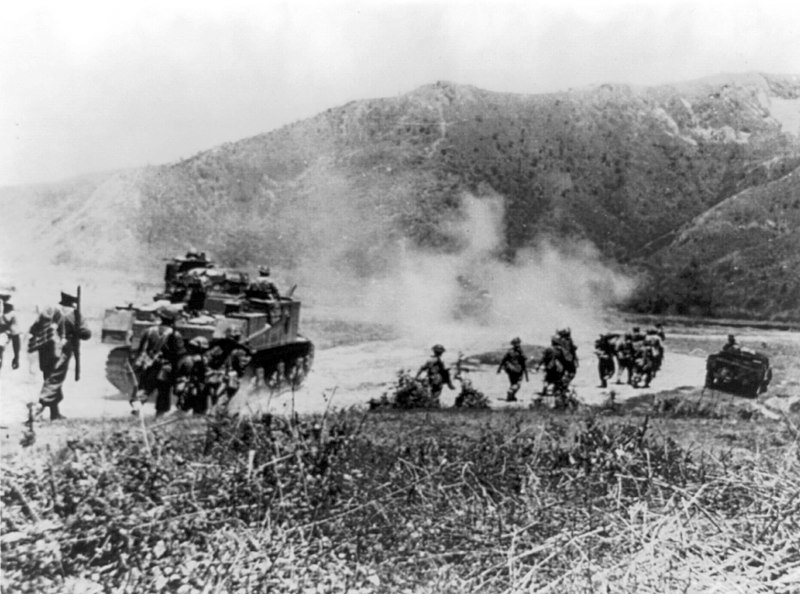
The battle of Imphal was fought between British Indians and Japanese along with INA. It started on 8 March-18 July 1944. The battle of Imphal was one of the most grueling campaigns of the Second World War.
By the summer of 1943, British forces were dominating the skies with the Royal Air Force (RAF). Japan had no plans to invade India. Lieutenant General Renya Mutaguchi of the Japanese 15th Army knew offending India, he could eliminate aerial threats. Additionally, Japanese controlled northeastern India would cut off the Hump as the trade route of the USA and China. Imphal was the state capital of Manipur and this place was used as a buffer to target Burma and the same place was targeted by Mutaguchi. Initially, superiors of Mutaguchi were against his proposals and with advocacy in his side Operation U go was approved by Southern Expeditionary Army and the Imperial General Headquarters (IGHQ) in Tokyo, Japan.
Operation U-Go
Mutaguchi planned to destroy Indian Troops with Lieutenant General Motoso Yanagida 33rd Division and then this division will be reinforced by Lieutenant General Masafumi Yamuchi’s 15 Division. At the same time, Lieutenant-General Kotoku Sato’s 31’ st Division was to attack Kohima, the administrative center of state Nagaland. Mutaguchi did not receive support from his field general as they felt the plan was too risky.
The city of Imphal was defended by Indian IV corps under the command of Lieutenant General Geoffrey Scoones who had to report Lieutenant General Slim. This war used a strategy to move back from their forward position forcing the Japanese to fight with a longer supply, but Scoones reacted too late, as a result, the Indian 17th Division supplies were captured by Japanese and become encircled. However 214th Regiment of the 214th Regiment of 17 Division successfully counterattacked at Tuitum Saddle on 18 Mar, and recaptured supplies and safely retreated to Imphal on 4 April 1944.
At the same time, there was fighting with Kohima where Assam regiment was defeated initially, on 13 April Indian 5th Division counterattacked at Nungshigum Hill outside of Imphal with support from artillery and M3 Lee tanks. Japanese did not have anti-tank weapons artillery these heavier guns decided against Mutaguchi swift campaign. As a result, the hill was taken back by the Indian troops after dealing with heavy casualties on the Japanese.
The XXXIII Corps was joined by IV Corps and attacked Japanese troops on 22 June near Milestone 109. This battle was won by the British and Indian Troops, the siege of Imphal was ended.
Despite setbacks, the Japanese 33 Division under command of Lieutenant General Nobuo Tanaka and freshly reinforced Battalions of 53 and 54th divisions continue to assert pressure on the Indian troops. The 33rd Division broke the line of Bishenpur. Reluctantly Mutaguchi withdrew remnants of 33rd Division from Imphal.
Casualties
The Japanese defeat at Imphal and Kohima represented the largest defeat in Japanese military history. Of the 65000 defeat at this battle 30,000 were killed, 23000 were wounded. The allies suffered 17500 casualties in comparison. And in Imphal British and Indian troops suffered 12500 casualties.
Consequence
The allied victory in the battle of Imphal and Kohima allowed RAF to assert pressure on Japanese troops in Burma. The Hump in China continued with a successful defense.
Legacy
The commonwealth war grave commission cemetery at Imphal contains 16000 graves and Kohima holds 1,420. Kohima Cremation Memorial commemorates 917 Hindus and Sikhs killed in the battle.